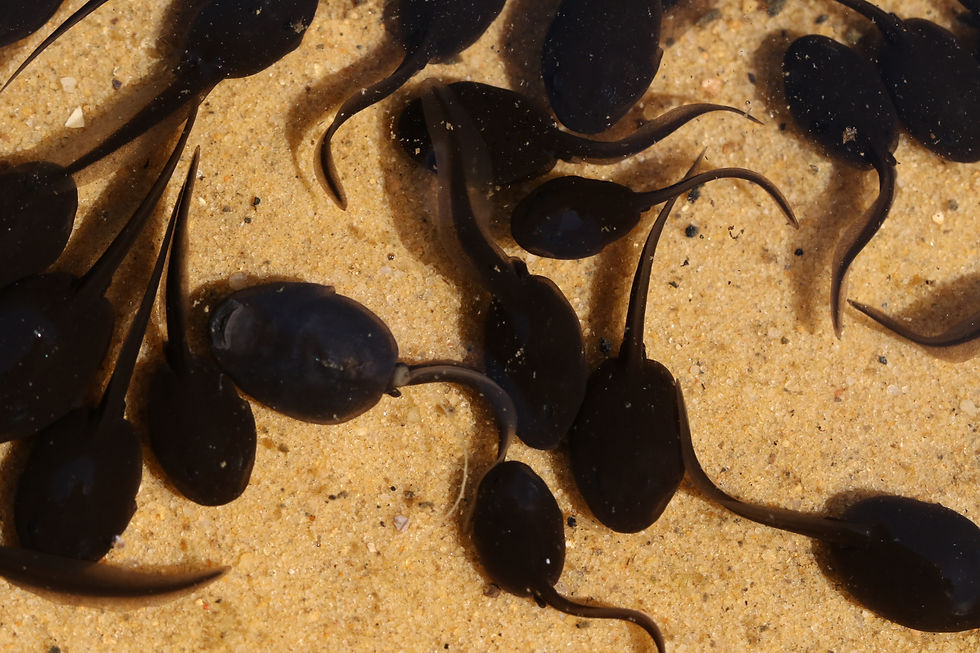Heh Gods & Eternal Life in Ancient Egypt
- Sylvia Rose

- Mar 19, 2024
- 4 min read
Ḥeḥ is the personification of infinity in the Ogdoad in ancient Egypt. The Ogdoad are eight primordial deities. His name at first means "flood", the watery chaos Nu existing before world creation. His female aspect is Hauhet.
See also:
Ancient Egyptians view this chaos as infinite, in comparison to a finite created world. The water is in all directions, everlasting. Heh personifies this aspect of the primordial waters. Heh's female counterpart is Hauhet, the feminine form of his name.
The Ogdoad of Khmunu (Hermopolis) live in the Nu as four frog gods and four snake goddesses of chaos. They're seen as male and female aspects of an androgynous deity, or separate gods and goddesses in relationships.
See also:
They are:
Nun and Naunet (water)
Amun and Amaunet (invisibility)
Heh and Hauhet (infinity)
Kek and Kauket (darkness)
The Ogdoad mythology tells of the eight divinities converging in a cataclysmic explosion. This gives birth to the Sun and its deific personification, Atum.
See also:
Symbols of Heh above include two palm stems with Shen rings & tadpoles at bases and palm stem head ornament. The Ankh, meaning eternal life, dangles from his arm, holding a scale, showing the was scepter (left) and the Djed or pillar of stability in balance.
Heh and Hauhet symbolize limitless time and long life. Like the others in the Ogdoad, Heh in male form is a frog or frog-headed human. His female form is a snake or snake-headed human.
See also:
The frog head represents fertility, creation, and regeneration. The other male Ogdoad Kek, Amun and Nun may also have frog heads. Heh is also shown as a man kneeling and holding palm stems, which represent long life. Notches on the stems indicate years.
Images of Heh are used in hieroglyphs to denote one million, considered equivalent to infinity in Ancient Egypt. Heh is also known as the god of millions of years. A tadpole represents 100,000 years. It's also a sign of water, magic, transformation and growth.
See also:
Sun god Ra travels across the sky during the day in the Barque of a Million Years. The people believe his journeys will continue until the end of time, when chaos overruns the land once more.
Heh can be one god or eight different gods. As several, they may support the great celestial cow in the heavens. Heh also supports the solar barque of Ra, and raises it into the morning sky at the end of its journey through the Underworld.
See also:
Heh might help Shu, wind and air god, to support the sky goddess Nut. In the Book of the Heavenly Cow, eight Heh gods are shown together with Shu supporting Nut, who has taken the form of a cow. If not held up as the cosmic sky, Nut falls to earth and mortal life ceases.
Identified with Shu, Heh is a god of wind also connected to four pillars supporting the sky. Like Shu, he's sometimes shown with arms raised to help hold up the firmament.
See also:
"O you eight chaos gods, keepers of the chambers of the sky, whom Shu made from the efflux of his limbs, who bound together the ladder of Atum...The bnbn [phoenix] of Ra was that from which Atum came to be as Heh... I am the one who begot the chaos gods again, as Heh, Nun, Amun, Kek. I am Shu who begot the gods."
-Spell from Coffin Texts
As a conceptual entity, Ḥeḥ has no cult center, shrine or sanctuary. Veneration of Heh involves specific symbolism and personal beliefs. The god's image and iconographic elements relate to millions of years of life or rule.
Figures of Ḥeḥ are popular as amulets, luxury items and royal iconography from the late Old Kingdom (c. 2150 BCE) on. Heh is associated with Kings and the quest for longevity.
On the tomb of King Tutankhamen, Heh wears a winged scarab crown, the beetle symbolizing existence and rebirth; and a sun disc. Placement of Heh in relation to King Tutankhamen's corpse means he grants Tut "millions of years" in the afterlife.
See also:
The feminine of the god Heh, Hauhet (Hehet), is a less known figure. A snake-headed woman, snake or all woman, who rules over infinity, she may be seen as a separate deity. Often she's portrayed as a female aspect of Heh, as in yin/yang.
See also:











